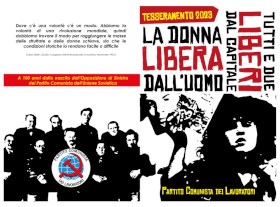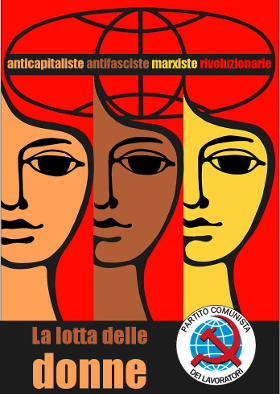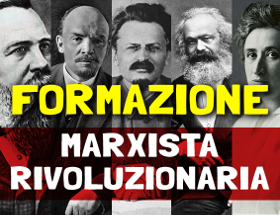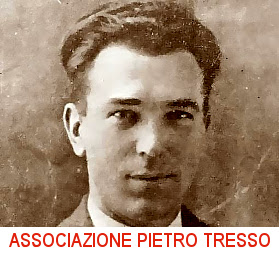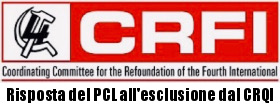Internazionale
The Ukraine war one year on, no end in sight
Russian troops out of Ukraine! Neither Russia nor NATO, against all imperialisms! For an independent socialist Ukraine
28 Febbraio 2023
Statement of the International Trotskyist Opposition. (Italian translation)
A year ago, on February 24, 2022, Russian troops invaded Ukraine. The troops had been massed on the Russia-Ukraine border, but few observers thought they would go in. Few thought the Russian government so foolish. But in they went.
The Ukrainian government, military, and people resisted, confining the invaders to the five southeastern oblasts from Luhansk to Crimea. A year later, the war remains a military stalemate along a 600-mile front line.
The Ukrainians initially fought with weapons left from the Soviet era or manufactured by their own arms industry. But as these ran out, the US and NATO sent arms to replace them. They also imposed sanctions on Russia and began cutting economic ties, most importantly the import of Russian oil and gas. The US, in particular, saw the war as an opportunity to weaken Russia and warn China.
The far left divided over the invasion. Most revolutionaries denounced it and demanded that Russia withdraw its troops. But the US-NATO arms shipments and sanctions led some to conclude that the war is a proxy war between imperialist blocs, in which they support neither side.
The International Trotskyist Opposition (ITO), in the process of reconstituting itself when the war began, supports Ukraine against Russia, opposes both imperialist blocs, and endorses the only full and just solution to the war: an independent socialist Ukraine.
On the war’s anniversary, we review events and draw lessons.
THE WAR SO FAR
The Russian Plan A was to shock and awe Ukraine into submission, modeling its invasion on the US invasions of Iraq in 1991 and 2003. The plan failed. Russia had far too few troops to prevail if Ukraine resisted, and resist it did. The Ukrainian government refused to submit, the Ukrainian military held, and the Ukrainian people mobilized.
Unable to take Kyiv, the Russian command fell back to its Plan B, seizing the arc of four oblasts adjoining Russia and providing a land bridge to Crimea. This plan succeeded. The initial Russian assault occupied most of the arc, and the conquest of Mariupol in May 2022 completed the land bridge.
The Russian forces took Sievierodonetsk in June and Lysychansk in July, completing their seizure of Luhansk Oblast, but they were unable to advance in western Donetsk, where they faced the best of the Ukrainian army.
Overextended in the north and south, they were forced to retreat to more defensible positions. They quit Kharkiv Oblast and Lyman, in northern Donetsk, in September, and Kherson in November. Ukrainian troops moved into the areas they vacated. The momentum seemed to have shifted to the Ukrainian side, and the government talked of offensives in the south and north. None came, and winter settled in.
Russian forces, including both regular army and Wagner Group units, continue to grind away at Bakhmut, in northern Donetsk. Their plan is to resume their pincer movement from north and south to evict the Ukrainian army from Donetsk. Basically, though, the military situation remains a stalemate.
In the first months of the war, the Ukrainian troops fought with weapons and munitions left over from the Soviet era or manufactured by the Ukrainian arms industry. As these ran out, they obtained replacements from Poland and other former Warsaw pact countries, and then new arms from the US and NATO.
The arms included howitzers and HIMARS missiles systems, which gave Ukraine rough parity in frontline firepower, but they did not send longer-range weapons that would allow Ukraine to strike Russia. In what may have been an implicit deal, Russia generally refrained from hitting Ukrainian targets behind the front lines. Neither Russia nor NATO wanted the war to escalate out of control.
In October 2022, Ukrainian special forces truck-bombed the Kerch Strait Bridge. Since then, the Russian airforce has targeted infrastructure across Ukraine, and the population has had to survive the winter with limited heat and light. The escalation was probably inevitable, given the stalemate at the front.
WHAT NEXT?
With spring coming, it’s all but certain that Ukraine and Russia will launch offensives to try to break the stalemate. Tactically, the key task for the Ukrainian side is to cut the Russian land bridge by driving south to the Black Sea. The key task for the Russian side is to expel the Ukrainian army from western Donetsk by closing its pincer from north and south.
It’s not at all clear that either side can achieve its objective. The fighting has taken on a World War I character, with 21st century weapons. The two sides blast each other with artillery and missiles, while infantry are unable to advance, as the other side is too deeply dug in.
The Ukrainian government has demanded tanks to help its forces break through. The US, German, British and French governments resisted for many months, saying that tanks wouldn’t be effective. For domestic political reasons, they’ve finally agreed. Dozens of German Leopard 2 tanks are likely to be deployed by spring.
In World War II, German tanks, backed by air power, launched their blitzkrieg, flanking or overrunning French, British and Polish lines. Since then, air power has shifted the tactical calculation again, as missiles can take out tanks.
The US and German commands were reluctant to send expensive, hard-to-maintain, hard-to-use tanks to a theater where Russian missiles might quickly destroy them. But the governments felt they had to do something more.
Beyond this is speculation. It’s possible that the Russian lines will collapse, and Ukraine will take back much of the territory it has lost. It’s possible that the Ukrainian lines will collapse, and Russia will advance on Kharkiv, Dnipro, and Odesa.
It’s possible that the US and NATO will supply Ukraine with longer-range weapons, and Russia will retaliate with escalating levels of destruction. It’s possible that the US and NATO will decide that the war is too expensive and risky, and pull back.
It’s possible that Ukrainian workers in the north and west will decide that endless war in the east makes no sense. It’s possible that Russian workers will decide that occupying parts of Ukraine isn’t worth dying for.
However, the most likely outcome is that the current stalemate will continue until the two sides have exhausted themselves and decide to stop fighting. Not a just or lasting peace, but a temporary break in the fighting.
ANALYSIS: THREE WARS CONVERGE
The Ukraine war is complicated, because three wars converge — or, putting the matter differently, the war has three aspects.
The first is the war of imperialist Russia against capitalist but not imperialist Ukraine. The Russian ruling class and governmental elite, led by Vladimir Putin, want to reassert Russian power in the territory of the former Russian Empire. In the west, this means most importantly reasserting Russian hegemony over Ukraine.
In this war, the Ukrainian people are defending their right to a nation-state against an imperialist aggressor, in fact, their historical oppressor. Revolutionary Marxists should support Ukraine in this war.
The second is the cold war between the US-led bloc of established imperialist powers and the Russia-China bloc challenging it. This is a classic inter-imperialist conflict. Revolutionary Marxists should support neither side.
The third is the civil war between the central government and Ukraine’s Russian minority, concentrated in the arc from Kharkiv to Odesa. This conflict is the most difficult to sort out, since the people living in the area are divided. Some are fighting for the central government, some are fighting to secede.
The 2015 Minsk II Accords attempted to resolve the national conflict inside Ukraine through language and cultural equality and a federal structure in which the regions would have wide autonomy. The federalism would have precluded Ukraine’s joining NATO, but not necessarily precluded its joining the European Union, since backdoor access to the EU could have benefited Russia too.
The Accords failed, because neither the Ukrainian government nor the Russian separatists wanted the compromise. But they showed a way forward, letting the people of the historically Russian areas determine their relationship to the Ukrainian and Russian states. They could choose to remain in Ukraine or to join Russia — with full democratic rights, including language and cultural equality and regional autonomy — or to have their own state.
For revolutionary Marxists, taking positions on the three wars separately is, or should be, relatively easy: for Ukraine in the Russia-Ukraine war, against both sides in the inter-imperialist cold war, and for the right of self-determination of the population in the historically Russian parts of Ukraine.
The difficulty is how to relate the three positions to each other. When Russians and Ukrainians are shooting at each other, which aspect predominates? In the ITO’s view, the shooting war is still predominantly a war of national defense by capitalist but not imperialist Ukraine against imperialist Russia.
TASKS
Revolutionary Marxists should advocate ending the Ukraine war on a just and democratic basis: Russia out of Ukraine, no to the inter-imperialist cold war, and self-determination for the historically Russian areas of Ukraine. This in the longer-term perspective of an independent socialist Ukraine, since nothing short of that would bring a just and lasting peace.
Revolutionaries in all countries should advocate this solution, but then the tasks vary by country.
In Ukraine, revolutionaries should support the war effort in whatever way they can: fighting in the army or the Territorial Defense Forces, organizing defense-related activity behind the lines, caring for the injured, repairing damaged buildings, keeping the economy going, keeping life going.
Beyond supporting the war effort, they should help the working class see that Russian workers are not their enemies, and the US, NATO, the EU, the Ukrainian oligarchs, and the Zelensky government are not their friends. The oligarchs and their governments are using the war to subordinate Ukraine to the Western powers. They are profiting from the war and taking advantage of it to attack democratic and social rights.
Revolutionaries should urge workers and soldiers to organize themselves, to defend their rights, to countermand cruel or stupid orders, to protect the lives of civilians and soldiers, and to fraternize with Russian soldiers, whenever an opportunity arises.
In Russia, revolutionaries should do what they can to obstruct the war effort. They should expose the lies and self-interest behind the war, and the cruelty and stupidity with which it is being fought. They should evade call-up and help others avoid it, or join the army and organize there. They should continue the class struggle, even if, and especially if, it undermines the war effort.
Of course, all this has to be done carefully, and much of it underground. The Revolutionary Workers Party (RRP) and other Russian revolutionaries are setting an example of courage and political integrity.
In the US and Europe, revolutionaries should support the right of the Ukrainian people and government to get arms from wherever they can. But their role is not to advocate that the imperialist governments supply arms. The governments are doing that already. This is not a Spanish Civil War situation. And their condition for providing arms is Ukraine’s accepting a dependent and subservient relationship.
Rather, the role of revolutionaries is to demand that their governments cancel Ukraine’s debt and provide the hundreds of billions in aid that will be needed to rebuild the country, with no repayment required. They should couple this with demands that their governments similarly cancel debts and provide aid to Afghanistan and the dozens of other countries destroyed by direct and indirect intervention.
They should oppose the new cold war and demand that their governments slash military spending, close foreign bases, bring their troops home, and dissolve NATO and all other imperialist alliances.
In China, revolutionaries should oppose their own imperialism in its attempt to seize Taiwan and repartition the globe. They should demand that their government convert its loans to poorer countries into grants, and turn over its investments to the workers. They should try to prevent Chinese imperialism from aiding Russian imperialism in the Ukraine war.
In India, Brazil, Mexico, South Africa, Turkey, and other non-belligerent countries, revolutionaries should demand that their governments support Ukraine in the hot war, be neutral in the cold war, and counter the effects of food and energy shortages and inflation on the population. They should oppose attempts by their ruling class to take advantage of the war to pursue their regional ambitions.
In all countries, revolutionaries should continue the class struggle, including the struggle for democratic rights and liberation of the oppressed, and the struggle against climate change and environmental devastation. War is another reason to hate capitalism, not to make peace with it.
The two blocs of imperialist powers are fighting to dominate the world. The working class has no interest in the outcome of their struggle. Its interest is in its own power and the establishment of its own government, in every country and in the world.
Revolutionaries today should follow the example of revolutionaries from the Communist League through the Third and Fourth International. We should organize ourselves to help the working class organize itself to put an end to capitalism and war.
Russian troops out of Ukraine
Neither Russia nor NATO, against all imperialisms
For an independent socialist Ukraine
For a socialist revolution in Russia
For a united socialist states of Europe, from Lisbon to Vladivostok


